#Have I worked out why Neverwinter has such a small staff and one library in the area? Absolutely not.
Text
Characters Out of Context
➥ Include one character quote — of your choosing — from each chapter of your WIP (or as many chapters as you'd like).
➥ Give absolutely no context, save for what's between two parts of an interrupted sentence, should that occur. You may mention who said it.
Tagged by @liltaz-asatreat (thank you so much!)
There’s currently 20+ chapters in my big WIP and I’m not going to do that to you all, but here’s 8 lines!
Neverwinter Library
Chapter 1: Customer Service Sucks
Kravitz - “Ma’am, you make a wonderful and eloquent point, these books are incredibly valuable, you’re correct. It would be remiss of me to throw them out instead of gifting them to a bibliophile like yourself!” With a vicious smile, he levitated the stack of withdrawn books onto the desk in front of her.
“Would you like a bag?”
Chapter 4: Taking a Leap
“Don’t make me regret this Agnes” Taako’s hand shook slightly as he reached for the bowl in the fridge, but he knew this was going to be okay. He’d been practising. Lup made the mix with him, he’d checked it, everything was fine. “There’s no need to make a fuss, magic boys deserve treats, and my magic boy only gets the best. No shop bought cookies here” Taako pointedly refused to make eye contact, but did curl his waist very slightly towards Angus’ head before hip checking him out of his way.
Chapter 6: Collision
Edward - “There’s really no need darling, we’re far too busy to look at your little pictures. Maybe we can cut costs by swapping out the other staff for volunteers? I bet some older people would love a nice relaxing job like that - it must be nice to just read all day!”
Chapter 10: Accidental Encounters
Taako - “Yes, Krav. It’s a date. Now it’s a date with me, my sister, and Barry. Welcome to the Tacco-Bluejeans experience!”
Chapter 14: Kitchen Therapy
Angus - “No Mr Kravitz, Sir. We were near the door. I was just very excited because I saw Uncle Barry and Aunt Lup and my Dad so I walked fast to get a hug and giggled because I was happy. I’m just a little boy, Sir. A little boy who was happy to see his family.” Angus looked up at Kravitz, trying hard to summon a few tears.
“Am… am I in trouble, Sir?” He sniffed loudly.
Chapter 17: Double Entendre
“I think this is the best thing I’ve ever put in my mouth.”
Taako opened his mouth, but Kravitz held up a hand before he could.
“NO! Don’t. I’m at work, Taako.”
Chapter 21: Officially on the Case
Taako - “You’re okay bubbleh, you’re fine.” Taako reached an arm round his shoulders and squeezed him. Then broke the moment.
“But if you ever scare me like that again, you won’t be.” Angus couldn’t help the fear that ran through him, but Taako was already speaking before he could react.
“That sounded awful in my mouth, I was trying to joke. It sounded like him. I’m sorry Angus, forget I said that.” Taako sounded panicked, and Angus just burrowed his way into Taako’s side - worming into his lap for a firm cuddle.
Chapter 23: (TBC)
Taako - “Bones” Taako sounded exasperated.
“Are you legitimately telling me that you’ve had access to a free lawyer this entire time and have only now thought that maybe it would be helpful to get them involved?”
I think most people have already been tagged, but @faintlyglow @finniestoncrane might not have been yet? (Sorry if I doubled up!)
Anyone else who fancies it then please take part, I always love to see people’s work!
#Are we going to use this fic to work out some really specific library peeves? Who could say#TW for implied previous domestic violence#You know Lydia and Edward are evil because they just don't appreciate public library services#Have I worked out why Neverwinter has such a small staff and one library in the area? Absolutely not.#But it was definitely better than me trying to write in a bajillion people and get snagged up in the actual day to day running of libraries#Also - budget cuts because actually everyone expects them to run on no money#So support your local library#TAZ balance#WIP#noodyl writes
12 notes
·
View notes
Text
The Big Fucking D&D 4E Rant
Or, ‘That Time Wizards of the Coast Fucked Up D&D’s Lore’
At the risk of raising the spectre of edition war again, I feel like it’s worth going back and exploring that time that Wizards of the Coast fucked over basically all of their lore to chase a trend that wasn’t there. Admittedly this comes with the (begrudged) acknowledgement that quite a bit of of this is likely to be out of date now that fifth edition has been out for a good several years now, but that edition has its own problems and while I’m not really going to touch upon it now, my problems with it are many and numerous.
It should be noted from the outset that this is going to talk about fourth edition in a negative and critical context, but I’m not going to be talking about the rules of the actual game as a game. This is entirely centred on story, worldbuilding and lore, and how those were handled in fourth edition as compared to what came before. That being said, if you like fourth edition, and especially if you like its lore, I would not suggest reading further.
I’m going to go far beyond being critical in this; I’m going to get outright mean.
A shout out must go to Susanna McKenzie (@cydonian-mystery) for input and feedback on this.
I suppose the most important place to start is, in many ways, the beginning, by which I mean my own introduction to Dungeons & Dragons. Mostly because it’s directly linked to the main reasons why I consider the lore to have been ruined, but before I even start off with that, I’m going to have to tell you where the lore was before I can really adequately explain its downfall.
In Realms Forgotten...
Like many people of my generation, I got into Dungeons & Dragons first through the computer based role-playing games. Specifically I started off with various titles by Black Isle and BioWare in the late-90s and early-00s, with stand-outs including Baldur’s Gate, Icewind Dale, Neverwinter Nights, and their sequels. What all of these had in common beyond being Dungeons & Dragons adaptations is the fact that they took place in the Forgotten Realms, one of the more famous settings thereof, and the lore of that world intrigued me far more than the rules alone.
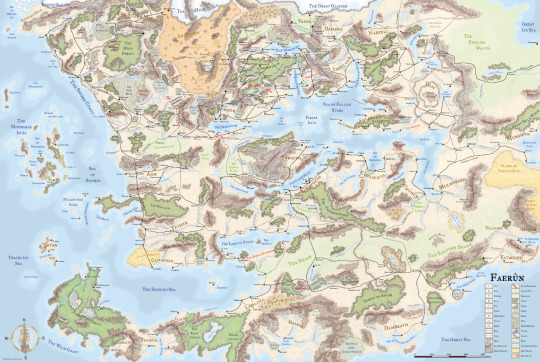
This might not sound like much, of course, to a newer fan for whom the Forgotten Realms, and its central setting of Faerûn, likely feels just like that generic world that D&D just happens to take place in nowadays. But back in the day, it was far more than that.
At the time I was getting into it, local libraries and bookstores carried bestselling novels set in the worlds in question, so I could pick up a novel based around various characters who appeared in the games, like the drow ranger Drizzt Do’Urden or the powerful wizard Elminster. There was also this huge encyclopedic book of geography and deities and the history of the world, with a big fold-out map which is still stuck up on my bedroom wall even after moving house three times. It was perfect fodder for my young nerdy fangirl self to develop full-on special interests in this stuff.
And the level of detail and lore and nuance in the world and its peoples was immense, with even the tiny and obscure bits of the setting earning massive amounts of unique lore. The result was a world that felt like it was alive, vibrant, and lived-in. Like real people could live there, with colourful heroes and villains to encounter.
This, I think, was the unwitting downfall of the Forgotten Realms, but I’m getting ahead of myself because this is really only step one, and Realms are really only one part of it. There are in total three of them, and I’ll be going through the baselines of each of them before we move on.
Out to Planescape
If you’ve read through the core books for fifth edition, there’s a chance you already have some degree of knowledge of Planescape and what it is. Or more precisely you know about the core structure of the Dungeons & Dragons multiverse; the Great Wheel. A series of elemental inner planes and transitive planes, with a ring of sixteen aligned outer planes representing various combinations derived from the axes of law versus chaos, and good versus evil, centred around a neutrally-aligned central plane.

At the centre of this central plane is an infinitely tall spire, atop which lies the famous torus-shaped city of Sigil, the city at the centre of the multiverse. There are a few more bits to it than that, and there are actually differences between how it once was and how it now is. For instance back in the day, there was no such thing as the Feywild or Shadowfell, and neither one was present in the original structure as laid out in 1987’s Manual of the Planes for AD&D.
Once again, to say that this is barely scratching the surface of the planar cosmology and its general meaning to Dungeons & Dragons lore would be a gross understatement. It wasn’t long after the publication of the above book that there was a new campaign setting created called Planescape, which would centre entirely upon this cosmology and build it into the lore. This is where the city of Sigil was introduced, a place of weird concordance where demons, angels, and creatures far, far stranger than either rubbed shoulders in the street, and only the watchful eye of the mysterious and powerful Lady of Pain kept things from erupting into all-out war.
It was a world of disputes, where a myriad of factions representing various philosophical concepts went toe-to-toe with one another. All wrapped up in a tone not unlike a strange mix of China Miéville and Charles Dickens, with the local dialect and thieves cant giving a unique flavour that no major campaign world outside of Planescape can really manage.
Perhaps the most famous and lasting contribution that this setting has was the tieflings, aasimar, and genasi, referred to collectively as the planetouched. These were born from a mix of planar interaction with human bloodlines, in particular through the very old fashioned way that any hybrid is created, which is perhaps why tieflings were the more common. They carried the blood of fiends, and most commonly demons by way of ancestors who reproduced with succubi and incubi, though no two tieflings looked especially alike, with variable and strange features.
I’ll be getting back to these later, but suffice it to say that Planescape was an interesting outlier setting, far stranger and more creative than almost anything else in anyone’s catalogue. And it forms the second part of our list of ruined lore.
And back down to Greyhawk
There’s a very good chance that your knowledge of Greyhawk is pretty limited, because while one could make good arguments for the above only just being ruined when fourth edition came around, there’s a lot to be said about how Greyhawk’s been the forgotten cousin for a while now, though to the credit of the current staff at Wizards of the Coast, they did just release a full-on Greyhawk adventure with Ghosts of Saltmarsh.
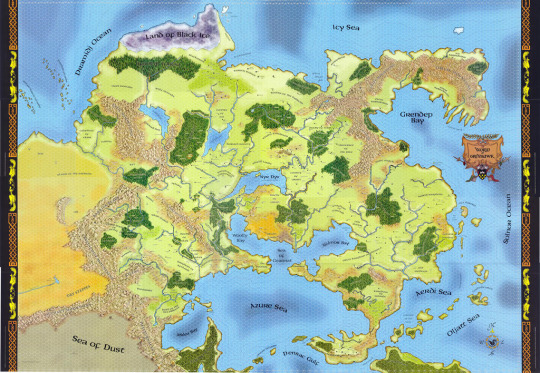
Introduced in the late seventies and early eighties, the World of Greyhawk, taking place on the fictional planet of Oerth and in particular on the subcontinent of the Flanaess, was the personally created campaign setting of Gary Gygax himself. While not as detailed as the Forgotten Realms, nor as interestingly out-there as Planescape, it is nonetheless a pretty cool world overall with a fun pulpy atmosphere that gives it its own sense of weight and nuance.
However, after Gary Gygax left TSR back in the 1980s, some later creators took it upon themselves to more or less mock his legacy overall. Nonetheless it remains a popular location for fans and creators, and towards the late third edition there was a lot of good work done in reviving it, such as with a series of adventure paths published in Dungeon Magazine in the form of Shackled City, Age of Worms, and Savage Tide, and following that a big adventure module in the form of Expedition to the Ruins of Greyhawk.
Since it’s the most basic element, let’s start with how they treated Greyhawk...
Strip-Mining the Free City
To say that Wizards of the Coast ruined Greyhawk would actually be inaccurate because, to a degree, they didn’t actually use Greyhawk. At least, not fully.
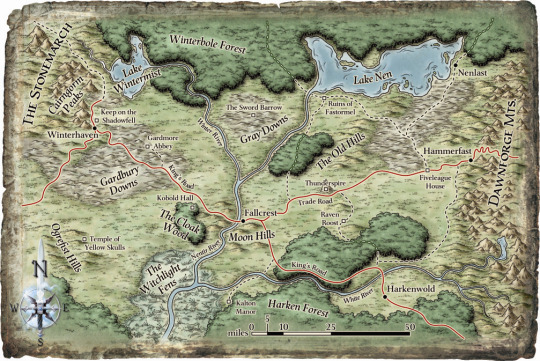
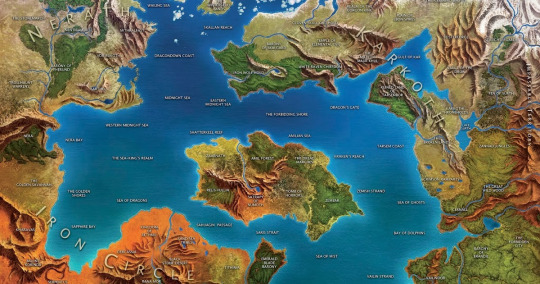
What they did instead was create a ‘new’ campaign setting, sometimes called the Nentir Vale, that used a few scavenged and cherry-picked Greyhawk deities and also a whole selection of adventures and locations previously specific to Greyhawk. Notable examples of such on the larger worldmap seen in the boardgame Conquest of Nerath included the Tomb of Horrors, the Vault of the Drow, and the Temple of Elemental Evil.
The resulting setting wasn’t Greyhawk, but had enough pieces that it felt like an insult to it. Often having those elements be modified in such a way that they felt like mockeries rather than the original concepts. A big part of why that felt like mockery is of course that Nentir Vale, or the Points of Light setting as it was sometimes referred to as, didn’t really exist as its own fully-fledged world. There wasn’t really a campaign setting book, or much detail on anything outside of a few small locations.
This is a relatively small part of what Dungeons & Dragons 4th edition did wrong, but it’s a small taste of what’s to come. However as seen with the Greyhawk conversion guidelines for many adventures, and even the release of the recent Ghosts of Saltmarsh, Greyhawk itself seems to have survived while the Nentir Vale remains almost entirely forgotten except for mentions of the Dawn War pantheon on one page of the Dungeon Master’s Guide.
It seems like Wizards of the Coast realised it was a bad idea.
‘The Great Wheel is Dead!’
As we go back out to Planescape, we notice that — much like Greyhawk — it also isn’t there, as the entire cosmology and its thematic importance has been replaced with something so radically different that it’s practically a complete replacement. Just about the only part of Planescape that was kept was Sigil itself, but as shown repeatedly in the fourth edition version of Manual of the Planes, they obviously didn’t understand either Sigil or the Great Wheel in any real way.
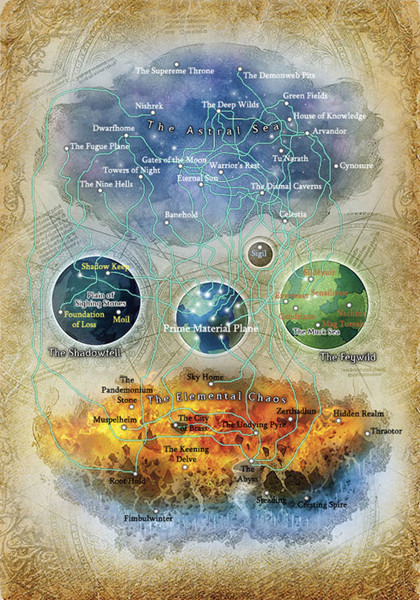
I’m not going to talk about the World Axis much in direct terms, but instead more the mindset that was taken with regards to Planescape’s Great Wheel. Now this requires something of a diversion into an old pre-fourth edition preview document, and how it handled the Great Wheel and old materials.
The Great Wheel is dead.
One of my mantras throughout the design of 4th Edition has been, “Down with needless symmetry!” The cosmology that has defined the planes of the D&D multiverse for thirty years is a good example of symmetry that ultimately creates more problems than it solves. Not only is there a plane for every alignment, there’s a plane between each alignment — seventeen Outer Planes that are supposed to reflect the characteristics of fine shades of alignment. There’s not only a plane for each of the four classic elements, there’s a Positive Energy Plane, a Negative Energy Plane, and a plane where each other plane meets — an unfortunate circumstance that has resulted in creatures such as ooze mephits.
The planes were there, so we had to invent creatures to fill them. Worse than the needless symmetry of it all, though, is the fact that many of those planes are virtually impossible to adventure in. Traversing a plane that’s supposed to be an infinite three-dimensional space completely filled with elemental fire takes a lot of magical protection and fundamentally just doesn’t sound fun. How do you reconcile that with the idea of the City of Brass, legendary home of the efreet? Why is there air in that city?
So our goals in defining a new cosmology were pretty straightforward.
• Don’t bow to needless symmetry!
• Make the planes fun for adventure!
The ‘impossible to adventure in’ mindset towards the Great Wheel is entirely bullshit, which I think is best highlighted in the passage on the City of Brass. How can a plane of pure unchanging fire without variation also have a city-state? Maybe, just maybe, it wasn’t without variation and they’re making shit up to justify their own nonsense.
The arrogance here is nothing short of infuriating. It typifies everything about the approach that Wizards of the Coast was taking towards Dungeons & Dragons at the time, and can only really be described as destructive.
There was nothing but an arrogance and often gleeful disdain for previous editions. Along with declarations of how it was so much better now, with the old version being bad for some reason despite that version having generated a huge fanbase, and a critically beloved computer role-playing game in the form of Planescape: Torment. And as with Greyhawk, they’ve done what they can to reverse that. The only elements of the new cosmology that remain are the Elemental Chaos as an in-between for the Elemental Planes, the Feywild, and the Shadowfell.
Wizards of the Coast once again seemed to realise where they were going wrong, and this is basically a recurring element of fifth edition.
Unfortunately, the World Axis and Nentir Vale aren’t really where the majority of my frustrations lie.
The Shattered Realms
To summarise the degree to which they basically destroyed the Forgotten Realms is going to take a while, simply because they were thorough. And it’s this that ultimately puts me into a position where I’m always going to be negatively predisposed towards Wizards of the Coast and their handling of Dungeons & Dragons.
As a bitof a preamble, fourth edition brought with it several substantial changes to the way a lot of the ruleset worked. And not just on a mechanical level, but on a lore level as it related to certain in-universe elements.. Basic concepts about magic and how it worked were altered at the baseline level, and in order to explain these differences it was decided by the higher-ups at Wizards of the Coast to implement a big huge event to explain the edition differences. This was something they called the Spellplague.
This is not the first time they’ve done that; they previously had the Time of Troubles, which worked to explain the relatively minor differences in magic between the first and second edition versions of Advanced Dungeons & Dragons, killed off or replaced a few gods, and ultimately shook things up a little bit. This was not really met with widespread acclaim at the time, and many complained about it but ultimately it’s a series of events which were later picked up by BioWare for Baldur’s Gate so it’s hard to really complain too harshly.
And indeed, they did it again with the change-over from fourth edition to fifth edition, with the Second Sundering bringing radical changes that all coincidentally left things looking like the pre-fourth edition version of the Forgotten Realms. Like with Planescape and Greyhawk, Wizards of the Coast knew they’d fucked up. But unlike with those, there were more than a few scars that haven’t really been all that fixable.
And to show you what I mean, I suppose we can start with the map, as that’s one of the clearest indications, when put in comparison, as to just how much was changed.
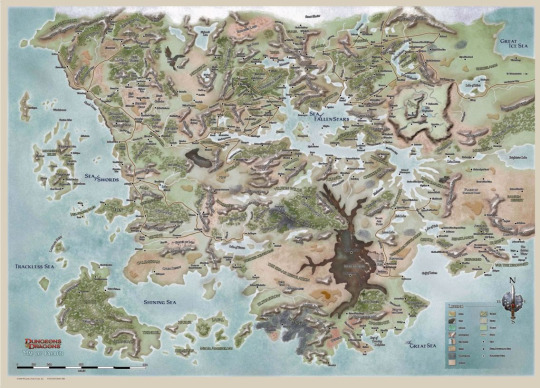
If you scroll back up and compare with the original map, you can kind of see just how much they absolutely fucked the Forgotten Realms.
The basic idea behind the Spellplague was that the goddess Mystra was murdered, and in her death throes the entirety of magic went haywire. Blue fire erupted across the world, and left entire nations and segments of the landscape scarred and destroyed. Often, conveniently, hitting worst those places that would traditionally, in-setting, be inhabited for the most part by various peoples of colour. Going into exhaustive detail would be extremely difficult, but keep in mind that the most heavily-devastated looking locations tend to be those that are inhabited by non-white people.
At least one of the nations destroyed, Halruaa, was actually the homeland of a long-running half-elf wizard character of mine at the time.
Most major magic-user characters suffered extreme maladies to their spellcasting, either killing them off or rendering them powerless.
In a series of unrelated but contemporary events, the entire elven and dwarven pantheons were radically altered. Most elven deities who weren’t Corellon Larethian were revealed to be aspects of non-elven deities, and around half of the elves themselves wound up being renamed to ‘eladrin’ to match the bullshit new elf subrace from the fourth edition books.
The drow pantheon was similarly culled until only Lolth remained, and as part of that they slew the goddess of good drow, Eilistraee. What happened to her followers is probably a good example of how there was a good deal of racism involved. Basically, the drow who followed her were ‘cleansed of the taint’ that had turned them into drow to begin with.
Including lightening their skin.

This is an event that Wizards of the Coast hasn’t really broadcast much after their reintroduction of Eilistraee, and it’s really not hard to see why they’ve minimised it.
The human gods didn’t fare much better. The entire Mulhorandi Pantheon was removed, because apparently having real-world Egyptian mythological gods around was a little too much for them. They also did the same with Tyr, who was originally from Norse mythology, though left Silvanus, Oghma, and Mielikki. Possibly because barely anyone pays attention to Celtic pantheon deities, and the latter Finnish deity was the patron goddess of a specifically popular character from the novels.
And between destroying half of the map, eliminating half of the pantheon full of various fan favourite gods, and killing off a lot of major magic-user characters, you’d think that would be considered a bad enough result.
But then there’s the timeskip.
Wizards of the Coast advanced the timeline by approximately one hundred and five years, therefore killing off literally every major human character who didn’t have some kind of magical way of extending their lifespan. And in addition to the effects of the Spellplague, brought in a variety of huge geopolitical changes that replaced major governments and kingdoms with new and nearly-unrecognisable versions that might have shared a name.
I’m not going to go into much more detail on various other changes, but keep in mind that this is only barely scratching the surface. There wasn’t a single region of the Forgotten Realms left unaltered or unmarred by this event, and it ultimately can’t be seen as anything other than an act of vandalism. It’s not even getting into the fact that, for instance, entire sections of the landscape of Toril were replaced by segments of another world entirely so they could justify the introduction of dragonborn as a core race.
Which is incidentally why I dislike the dragonborn.
The events of the fifth edition changeover worked to mitigate a lot of this, but the sheer extent of damage done is so much that the modern Forgotten Realms is still only a pale echo of its former self. All because they wanted to chase the audience of fucking World of Warcraft of all things.
Seriously, fuck Wizards of the Coast.
#4e negative#D&D 4e#the spellplague#we all get drafted into the edition war#wizards of the coast critical#wotc critical#forgotten realms#an old rant that's been a long time in the making
56 notes
·
View notes